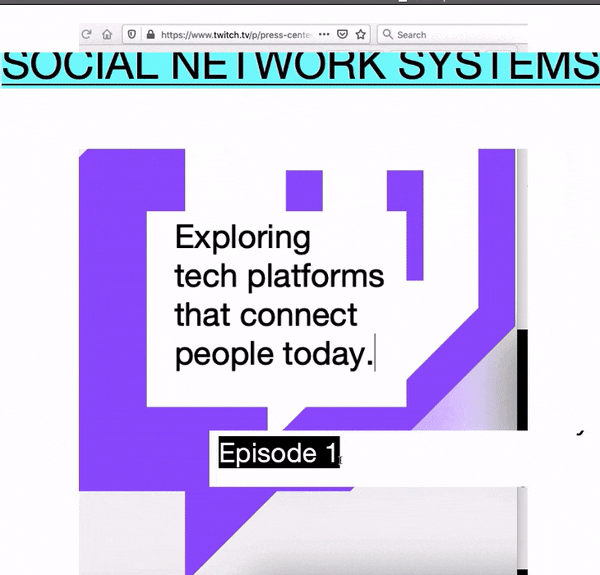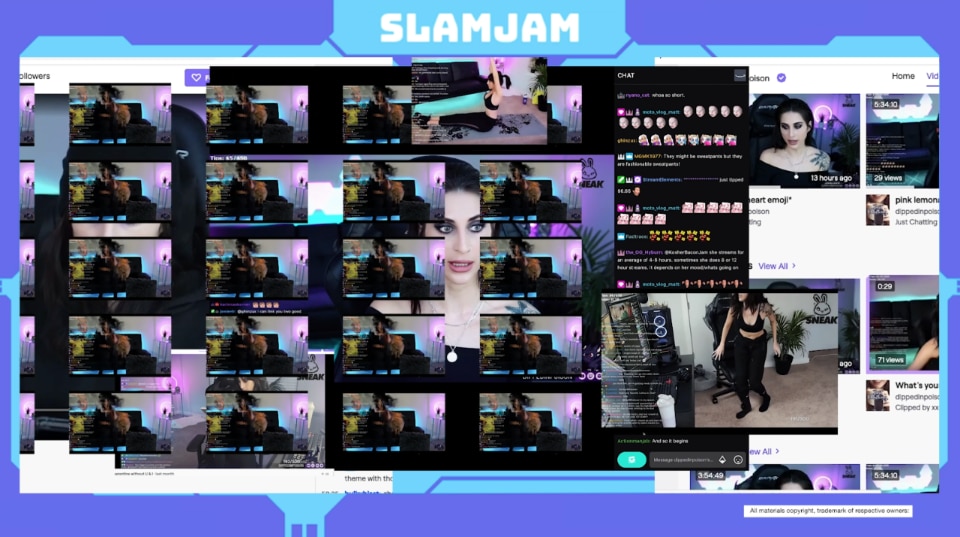Tiffany Godoy is a Los Angeles born-and-raised Internet expert and fashion journalist and influencer, but since the 1990s she’s been living mostly in Japan. Her last work with Slam Jam, Social Network Systems, studies the interaction between different communication platforms, is the result of the multisensory experience of the chaotic and hyper-commercial streets of Tokyo.

In the 1980s, Slam Jam founder Luca Benini visited certain NY neighborhoods in order to learn about underground culture (and to sign contracts with groups like Public Enemy). However, today everything that is alternative lasts a month or so, spreads through Instagram and, if it’s successful, is immediately bought by global brands like Louis Vuitton. Are there specific neighborhoods or areas in some cities where this type of culture can still develop?
It’s extremely complicated to answer, especially now that Coronavirus has made it impossible to organize social gatherings such as festivals, concerts, clubbing events, but also many physical activities except non-contact sports, like skateboarding. Maybe the way we will live together will be different. I think it is also stimulating to try to imagine how the situation will evolve, but I think we have to wait a little longer to understand it. Certainly, it is very difficult to hold events like Art Basel exclusively online. Some alternative cultures are coming up with different solutions that I would call “subscription services”: I think the first to do it were porn actors and actresses, who organized online “fan only” performances, but they were soon imitated by musicians, performance artists, illustrators and many others with different amounts of subscribers who can then also launch crowdfunding campaigns to improve their education.
Do you think there still is something alternative today?
There are many alternative cultures today, especially online. Many of them are disappearing, but others will create a virtual identity depending on the direction we decide to take. For example, in the video game world there are many of these communities: they are known by millions of old and young people, not only by thirty-year-olds. There are many alternative cultures of this kind in China... I think that ‘alternative’ doesn't mean ‘small’: I prefer to call them vertical cultures, because they involve different age and social groups.
In the meantime, the shopping streets all look the same: in the cities, in airports, in large shopping malls. Is this a virtualization process, too?
The king of Japanese street culture, Hiroshi Fujiwara, said that after all neither people nor food can be digitalized. Restaurants play an essential role in urban life because they not only offer food and drinks, but also entertainment: in many ways they bring people back to reality by using architecture to define their identity.

Many gamers spend a lot of money to customize their characters on Fortnite and other games. Is this a real market?
Avatars haven't really developed yet. In video game platforms there are some tools or items you can buy to customize your weapon. This is something functional, but I think that what is really interesting for the fashion sector is reselling: it's a widespread phenomenon, even very young guys now know exactly the global value of a t-shirt or something else thanks to apps like StockX, which was created originally to trade sneakers, but then moved on to streetwear. It's really well done.
Recently, Tom Ford stated that he believes that the whole fashion sector will necessarily go into hibernation for a while. I guess you disagree.
First of all, we have to consider that Milan Fashion Week will be held exclusively online, and most probably the Paris Fashion Week in September and October will be digital as well…and many more. But we still need to give something to media and consumers somehow. The digital world is in any case an important part of fashion. Now, we need to rethink everything, and we probably won't go back to the way it was before: the shops will look different, we will probably organize smaller shows... There is always a tipping point in every sector from which there is no going back. Obviously, the physical experience is fundamental: bringing people together nourishes the ecosystem, physical contact in conversations and also in education has already been negatively affected, especially in the USA. Nobody in the Ivy Leagues was prepared to move all classes online.

Can places that mix fashion, art and design like Spazio Maiocchi in Milan really be laboratories for creativity or “incubators” for a new taste in fashion? Or, on the contrary, is it just a new kind of shop that’s opened near the Bar Basso?
I think they are useful places to introduce younger people, who perhaps only have a culture about sneakers, to new worlds and thus open their minds. I think it can be really important for education, today even a T-shirt has become a way of expressing yourself, even if only through graphics. Places like this can help young people to broaden their horizon, and thus develop a wider culture.
All over the world, many architecture studios, especially the most recent ones, work with retail stores. What is the impact of this crisis on them? Lately showrooms don’t want to put clothes in their windows: at first sight Prada’s windows in New York seem empty...
In fashion, there is a constant need to create new experiences: a brand is much more than the clothes it produces. There are so many collections that today have stopped due to overproduction... I think that stores like Dover Street Market, just to say a name, should change and focus more on home-working. They should become “structures with instructors” for example in interior design. People will increasingly spend more time in the house, so the furniture will play an even more important role in their lifestyle.
How do you think the theme of sustainability is changing the fashion system today? For now, it seems to me that there are only small realities that use natural colours to recycle T-shirts, maybe extracting dyes from fruit and vegetables grown locally. In short, it is still a marginal phenomenon.
It’s complicated, there’s no book that can tell you what is sustainable and what isn’t, there are many ways to be sustainable... I think that every production phase needs to be reconsidered in this sense. In particular I think that the first thing we should change is the packaging: we use too much plastic, but clearly it will be a slow process. Another aspect that perhaps goes beyond ecology, but which I think is part of sustainability, is that of human rights. In other words, sustainability must also be economic: no one working in fashion must be exploited. This theme is becoming more and more important these days. Big brands like Chanel must precede everyone, because they have the power to do so. And then, the rest will follow, each company in their own way, albeit more slowly.
Opening image: Tiddany Godoy, photo Erick Faulkner


